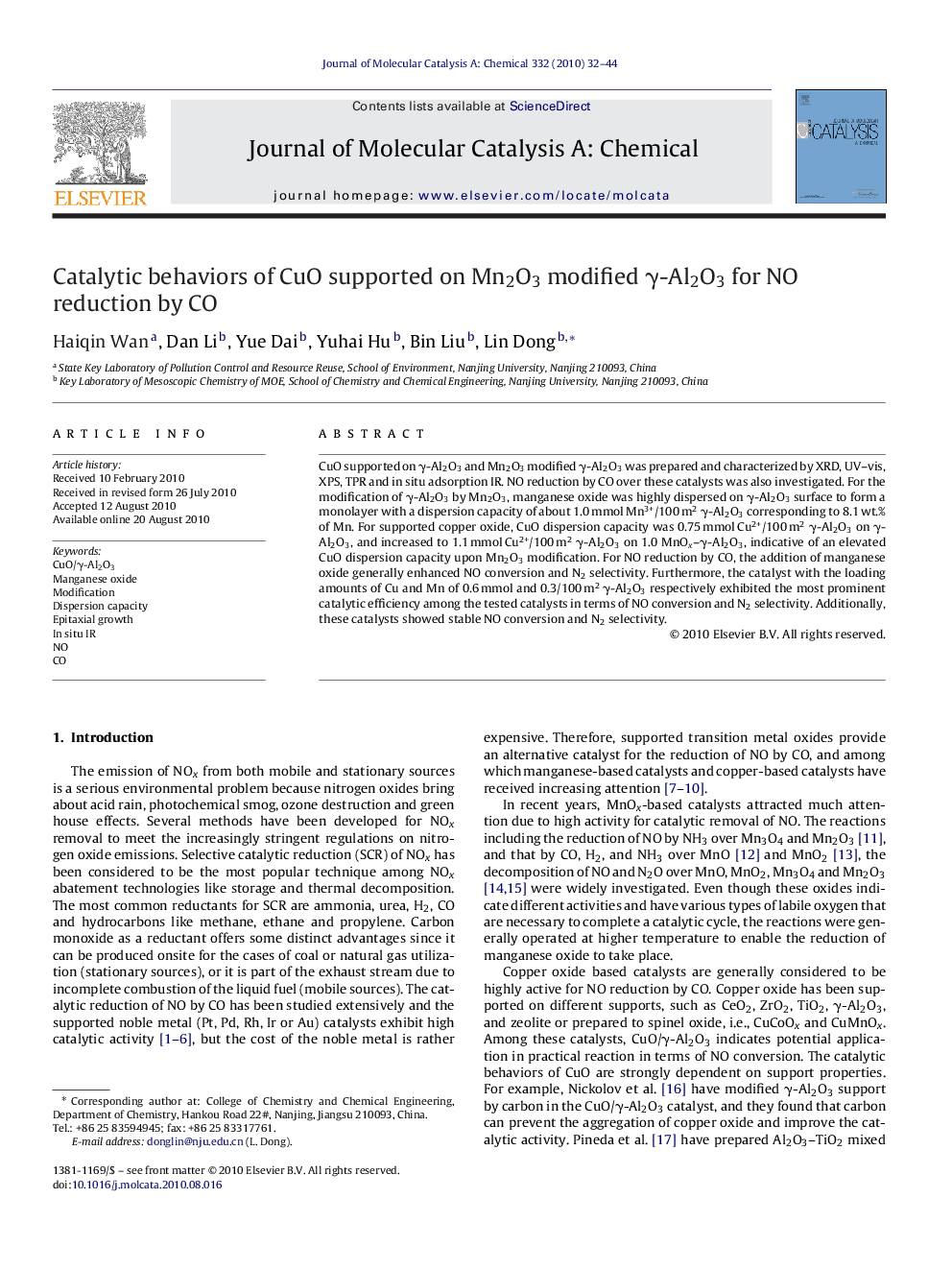| Article ID | Journal | Published Year | Pages | File Type |
|---|---|---|---|---|
| 66650 | Journal of Molecular Catalysis A: Chemical | 2010 | 13 Pages |
CuO supported on γ-Al2O3 and Mn2O3 modified γ-Al2O3 was prepared and characterized by XRD, UV–vis, XPS, TPR and in situ adsorption IR. NO reduction by CO over these catalysts was also investigated. For the modification of γ-Al2O3 by Mn2O3, manganese oxide was highly dispersed on γ-Al2O3 surface to form a monolayer with a dispersion capacity of about 1.0 mmol Mn3+/100 m2 γ-Al2O3 corresponding to 8.1 wt.% of Mn. For supported copper oxide, CuO dispersion capacity was 0.75 mmol Cu2+/100 m2 γ-Al2O3 on γ-Al2O3, and increased to 1.1 mmol Cu2+/100 m2 γ-Al2O3 on 1.0 MnOx–γ-Al2O3, indicative of an elevated CuO dispersion capacity upon Mn2O3 modification. For NO reduction by CO, the addition of manganese oxide generally enhanced NO conversion and N2 selectivity. Furthermore, the catalyst with the loading amounts of Cu and Mn of 0.6 mmol and 0.3/100 m2 γ-Al2O3 respectively exhibited the most prominent catalytic efficiency among the tested catalysts in terms of NO conversion and N2 selectivity. Additionally, these catalysts showed stable NO conversion and N2 selectivity.
Graphical abstractManganese oxide modified γ-Al2O3 could promote the dispersion capacity of CuO on this support because an epitaxil Mn2O3 monolayer formed on the γ-Al2O3 surface which results in the tetrahedral vacant sites of Mn2O3 to be preferentially occupied by Cu2+. The catalytic activities of CuO/γ-Al2O3 for NO reduction by CO were improved by Mn2O3 modification because Cu+ formed in the Cu/Mn–Al catalysts.Figure optionsDownload full-size imageDownload high-quality image (139 K)Download as PowerPoint slide
